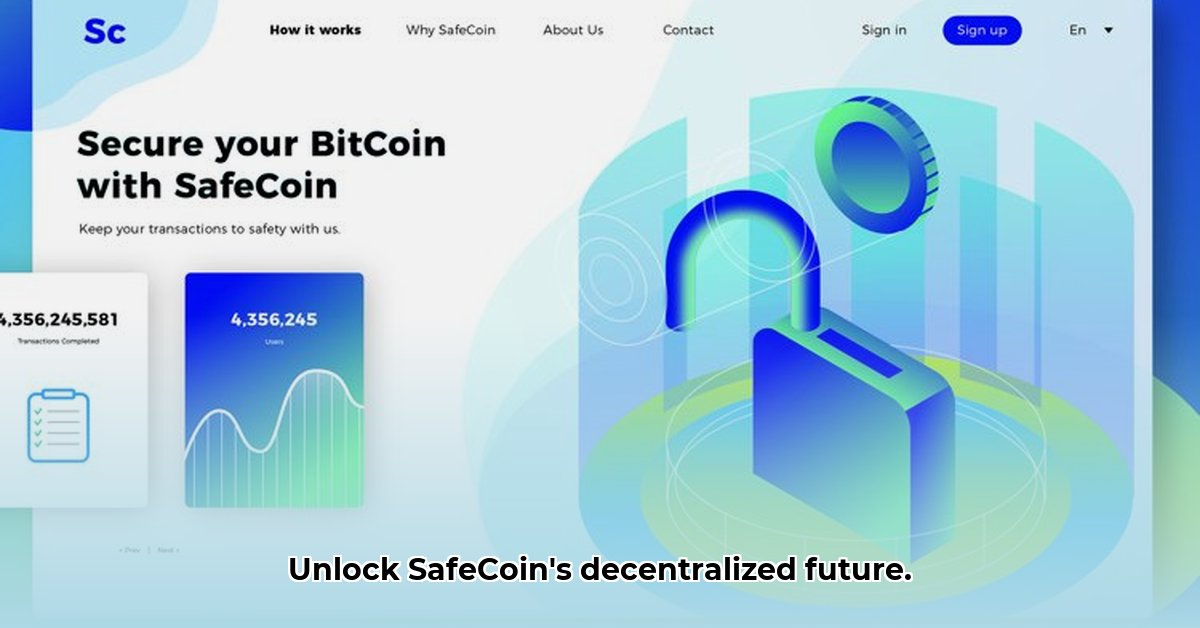
Speed, Decentralization, and Security: A Trifecta of Challenges
SafeCoin, a cryptocurrency built on a modified Solana codebase, promises high transaction speeds and energy efficiency within a fully decentralized framework. This review examines whether SafeCoin delivers on its ambitious goals, exploring its performance, governance, security, and market position. Is SafeCoin a groundbreaking innovation or a risky gamble? Let's find out.
Performance: Lightning-Fast Transactions, But at What Cost?
SafeCoin boasts transaction speeds exceeding 65,000 per second—a significant advantage over many competitors. This impressive speed is coupled with relatively low energy consumption, an increasingly important factor in the crypto space. However, high transaction speeds alone don't guarantee success. Scalability (the ability to handle an increasing number of users) and robust security are equally crucial. Can SafeCoin maintain its performance as its user base grows? This remains a key question.
Decentralized Governance: A Balancing Act
SafeCoin’s decentralized governance model, while appealing in its democratic ideal, presents challenges. The absence of a central authority means the community is solely responsible for decision-making and conflict resolution. This structure, while promoting fairness in theory, can lead to inefficiencies or even stagnation if not managed effectively. How effectively does SafeCoin's community govern, and what mechanisms are in place to prevent fragmentation or the hijacking of decision-making processes?
Transparency and Accountability: The Double-Edged Sword of Decentralization
The community-driven nature of SafeCoin presents a unique transparency challenge. While this approach fosters fairness, it also makes it more difficult to assign accountability. If issues arise, who is held responsible? This lack of a central authority necessitates exceptionally robust self-governance mechanisms and a strong commitment from the community to ensure ethical and efficient project management.
Market Position and Future Outlook: Navigating a Competitive Landscape
SafeCoin’s current market capitalization suggests a degree of community interest. However, the cryptocurrency market remains incredibly competitive. To succeed, SafeCoin must attract and retain skilled developers, cultivate a large and active user base, and consistently deliver on its technical promises. Can SafeCoin's unique strengths differentiate it from established players and emerging competitors?
Security and Scalability: A Foundation for Long Term Viability
SafeCoin, inheriting Solana's foundation, holds potential for scalability, but its decentralized nature introduces security concerns. How will the community ensure regular security audits and promptly address vulnerabilities? The modifications to the Solana codebase are crucial for stability. Will these improvements enhance security or introduce new weaknesses? Transparent and rigorous security practices are essential for attracting and retaining user trust. Does SafeCoin's community demonstrate this level of commitment?
Risk Assessment: A Multifaceted Approach
SafeCoin, like any cryptocurrency, faces inherent risks. These can be categorized as follows:
| Risk Category | Likelihood | Impact | Mitigation Strategy |
|---|---|---|---|
| Security Vulnerabilities | Moderate | High | Regular security audits, community bug bounty programs, transparent issue reporting. |
| Community Fragmentation | Moderate | Medium | Clear communication channels, proactive conflict resolution mechanisms. |
| Market Volatility | High | High | Diversification of investments, careful risk management. |
| Regulatory Uncertainty | Moderate | Medium | Monitoring regulatory developments, proactive compliance adaptation. |
SafeCoin's Security Landscape: A Community-Driven Challenge
SafeCoin’s decentralized structure poses unique security challenges. Traditional security measures, designed for centrally controlled systems, are less effective. Assessing these risks requires a multifaceted approach, considering both technical vulnerabilities and the human element.
Key Areas of Concern:
- Technical Audits and Transparency: Frequent, independent security audits and open-source code are vital for identifying and addressing potential vulnerabilities.
- Community Scrutiny: An active, engaged community can play a crucial role in identifying and reporting bugs or security flaws.
- Scam and Phishing Awareness: Proactive measures to prevent scams and phishing attacks are essential to protect users.
- Tokenomics: Sound tokenomics are critical to prevent manipulation and maintain economic stability.
- Regulatory Compliance: A balance between decentralization and regulatory compliance must be struck for long-term sustainability.
Conclusion: A Promising Project with Significant Challenges
SafeCoin offers a compelling vision: a fast, energy-efficient, and community-driven cryptocurrency. Its technological foundation shows promise, and its decentralized structure appeals to a certain ethos. However, significant challenges remain. The community must address transparency, security, governance, and scalability issues to ensure SafeCoin's long-term success. While its potential is noteworthy, its future hinges on the community's ability to execute its vision effectively – and manage the significant risks involved.